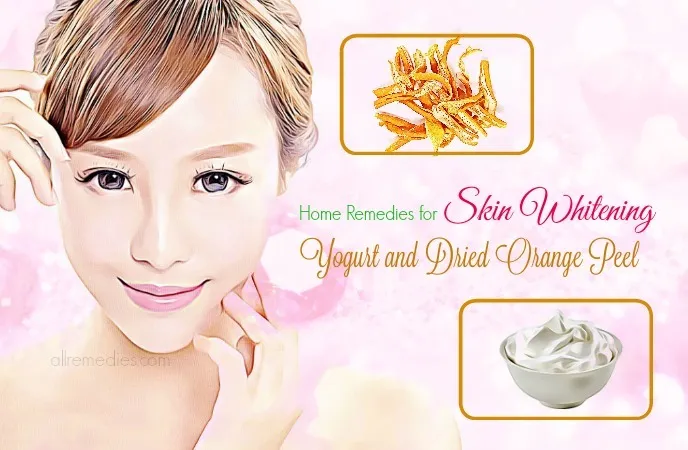Unveiling the Top 5 Skin Whitening Home Remedies
Are you dreaming of a brighter, more radiant complexion? Skin whitening creams can be expensive and often contain harsh chemicals. Fortunately, nature provides a wealth of effective and gentle remedies to help you achieve your skin goals. These home remedies not only aim to lighten the skin but also nourish and improve overall skin health. In this guide, we’ll reveal the top 5 secrets to natural skin whitening, using readily available ingredients from your kitchen. Get ready to embrace your best skin yet, naturally!
Lemon Juice for Skin Whitening
Lemon juice is a classic ingredient for skin whitening, renowned for its natural bleaching properties. The citric acid in lemon acts as a natural exfoliant, helping to remove dead skin cells and revealing a fresher layer of skin underneath. This can lead to a noticeable brightening effect over time. It is readily available and simple to use, making it a popular choice for those seeking a natural skin lightening solution. However, it’s important to use lemon juice with care and to be aware of potential side effects.
How Lemon Juice Works for Whitening

Lemon juice works on the skin primarily through its high content of citric acid, an alpha-hydroxy acid (AHA). AHAs are known for their exfoliating properties; they help shed the outermost layer of the skin, removing dead skin cells and revealing the brighter skin underneath. Additionally, lemon juice contains Vitamin C, a powerful antioxidant that can help inhibit melanin production, the pigment responsible for skin color. This dual action makes lemon juice a potent ingredient for tackling uneven skin tone, dark spots, and overall skin lightening. This approach provides a more even and radiant complexion over time.
Precautions When Using Lemon Juice
While lemon juice can be effective, it is essential to exercise caution. Always dilute lemon juice with water before applying it to your skin, as undiluted lemon juice can cause irritation, redness, and sun sensitivity. It’s crucial to perform a patch test on a small area of your skin before applying it to your entire face to check for any adverse reactions. Apply the diluted lemon juice only at night, and avoid direct sun exposure after application, as this can increase the risk of sunburn and further darkening of the skin. If you experience any stinging, burning, or excessive redness, discontinue use immediately.
Turmeric Face Mask for Skin Brightening
Turmeric, a vibrant yellow spice, is a staple in many Asian cultures and a powerhouse of skin-loving benefits. Beyond its culinary uses, turmeric is celebrated for its anti-inflammatory and antioxidant properties, making it an excellent ingredient for skin brightening and overall skin health. Its active compound, curcumin, helps to reduce inflammation, fight free radicals, and promote an even skin tone. Using a turmeric face mask regularly can lead to a noticeable reduction in dark spots, acne scars, and an overall improvement in skin radiance. This natural remedy is a gentle yet effective way to enhance your skin’s natural glow.
The Benefits of Turmeric for Skin

Turmeric is packed with benefits for the skin, primarily due to its potent anti-inflammatory and antioxidant properties. Curcumin, the active compound in turmeric, helps to reduce redness and irritation, making it ideal for soothing sensitive skin. Furthermore, turmeric’s antioxidant qualities help to combat free radicals, which can damage skin cells and lead to premature aging. By incorporating turmeric into your skincare routine, you can help diminish the appearance of fine lines, wrinkles, and dark spots. Its natural antiseptic properties also make it effective in treating acne and preventing breakouts, contributing to a clearer, healthier complexion. The spice actively promotes an even skin tone.
Creating a Turmeric Face Mask
Creating a turmeric face mask is simple and requires just a few ingredients. Mix one teaspoon of turmeric powder with two tablespoons of yogurt or honey to form a paste. You can also add a few drops of lemon juice for enhanced brightening effects. Apply the mask evenly to your face, avoiding the eye area. Leave it on for 15-20 minutes, then rinse thoroughly with lukewarm water. For best results, use the mask 1-2 times per week. Regular use of turmeric face masks can noticeably brighten your skin, reduce inflammation, and leave your complexion looking fresh and revitalized. Make sure to do a patch test first to ensure you’re not allergic.
Yogurt and Honey for Skin Whitening
Yogurt and honey are two gentle yet effective ingredients for skin whitening, offering multiple benefits for your skin. Yogurt contains lactic acid, an AHA that gently exfoliates the skin, promoting cell turnover and revealing a brighter complexion. Honey, on the other hand, is a natural humectant, meaning it attracts and retains moisture, leaving your skin soft and hydrated. It also possesses antibacterial properties that can help to treat acne and blemishes. Together, yogurt and honey create a potent yet soothing mask that lightens skin, improves texture, and provides essential nourishment. This combination is particularly beneficial for those with sensitive skin, as it’s gentle and unlikely to cause irritation.
The Role of Yogurt and Honey

Yogurt’s lactic acid gently exfoliates the skin, removing dead cells that can make your complexion look dull. This process reveals brighter, fresher skin underneath, leading to a more radiant appearance. Honey adds hydration and acts as a natural humectant, drawing moisture to the skin and locking it in. Its antibacterial properties help fight acne-causing bacteria, further enhancing the clarity of your skin. The combination of these two ingredients creates a synergy, where yogurt exfoliates and honey nourishes and protects. This blend provides gentle yet effective skin lightening and overall skin health benefits, suitable for various skin types.
Making a Yogurt and Honey Mask
Creating a yogurt and honey mask is incredibly easy. Mix together equal parts of plain yogurt and raw honey – typically one tablespoon of each is sufficient for the face. Apply the mixture evenly to your clean, dry face, avoiding the eye area. Allow the mask to sit for 15-20 minutes, allowing the ingredients to work their magic. Rinse thoroughly with lukewarm water and pat your face dry. For optimal results, apply this mask 1-2 times per week. Regular use will leave your skin brighter, softer, and more hydrated, promoting a healthy, glowing complexion. This mask is a simple yet effective way to enhance your skin’s natural radiance and overall appearance.
Aloe Vera for Skin Lightening
Aloe vera is a versatile plant with numerous benefits for the skin, including skin lightening. Its soothing and healing properties are well-known, making it a popular ingredient in skincare products. Aloe vera contains compounds that can inhibit the production of melanin, the pigment responsible for skin darkening. This makes it an effective remedy for reducing hyperpigmentation, dark spots, and uneven skin tone. Moreover, aloe vera’s moisturizing qualities help to keep the skin hydrated and healthy, promoting a naturally radiant complexion. Its gentle nature makes it suitable for various skin types, and its ease of use makes it a valuable addition to any skincare routine.
How Aloe Vera Helps with Whitening

Aloe vera aids in skin whitening through several mechanisms. It contains aloin, a natural depigmenting compound that has been shown to lighten skin and reduce dark spots. Aloe vera also helps to soothe and heal the skin, reducing inflammation and promoting cell turnover, which can help to reveal brighter skin. Furthermore, aloe vera’s moisturizing properties keep the skin hydrated, reducing the appearance of dullness and promoting a healthy glow. Its antioxidants help to protect the skin from damage caused by free radicals, further enhancing its brightening effects. The multifaceted approach of aloe vera makes it a beneficial ingredient for achieving a lighter and more even skin tone.
Using Aloe Vera Effectively
To effectively use aloe vera for skin lightening, you can apply fresh aloe vera gel directly to your skin. If you have an aloe vera plant, simply cut a leaf and squeeze out the gel. If not, you can purchase pure aloe vera gel from most health stores, ensuring it’s free from additives and fragrances. Apply a thin layer of the gel to your clean face or targeted areas, and let it sit for 20-30 minutes before rinsing with lukewarm water. Repeat this process once or twice daily for best results. Regular use will help to fade dark spots, even out skin tone, and leave your skin feeling hydrated and refreshed. Consistent application is key to seeing noticeable improvements.
Gram Flour (Besan) for Skin Whitening
Gram flour, also known as besan, is a staple ingredient in many South Asian cultures, celebrated for its exfoliating and skin-brightening properties. Made from ground chickpeas, gram flour is a gentle yet effective natural cleanser and exfoliator. It helps to remove dead skin cells, excess oil, and impurities, leaving your skin feeling fresh and revitalized. Its use can lead to a brighter complexion and a reduction in dark spots and blemishes. Gram flour is a simple, affordable, and readily available ingredient that is safe for various skin types. It’s a fantastic option for those looking to incorporate a natural and effective remedy into their skincare routine.
Benefits of Gram Flour for Skin

Gram flour provides several benefits for the skin, making it a popular choice for natural skincare. It acts as a gentle exfoliant, helping to remove dead skin cells and unclog pores, revealing brighter skin underneath. It also helps to absorb excess oil, making it beneficial for those with oily or acne-prone skin. Furthermore, gram flour contains zinc, which helps to fight acne-causing bacteria and reduce inflammation. Regular use can lead to a more even skin tone, a reduction in dark spots, and an overall improvement in skin texture. Gram flour’s natural properties make it a versatile ingredient suitable for a variety of skin concerns, promoting healthier and more radiant skin.
Making a Gram Flour Paste
Creating a gram flour paste is easy and customizable. Mix gram flour with water, rose water, or milk to form a smooth paste. For added benefits, you can incorporate other ingredients such as turmeric powder, lemon juice, or honey. Apply the paste evenly to your face, avoiding the eye area. Let it dry for 15-20 minutes, then gently scrub it off with water in circular motions. Rinse your face thoroughly and pat it dry. For best results, use the gram flour paste 2-3 times per week. Consistent use can help to exfoliate, brighten, and improve the overall texture of your skin. The customization options allow you to tailor the paste to your specific skin needs and preferences.
Conclusion
Achieving brighter, more radiant skin doesn’t always require expensive creams or harsh treatments. Home remedies provide a gentle and natural approach to skin whitening, harnessing the power of ingredients readily available in your kitchen. From the exfoliating properties of lemon juice and gram flour to the soothing benefits of turmeric, aloe vera, yogurt, and honey, these top 5 secrets offer a holistic approach to skin care. Remember to always perform patch tests, be consistent with your routine, and listen to your skin. Embrace the journey to healthier, brighter skin, and enjoy the natural glow that comes from within. Incorporating these remedies into your skincare routine is a step towards achieving your desired complexion, naturally and safely.
